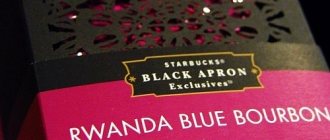Coffee shop in the USA
Coffee shop in Damascus
Coffee shop
- a gastronomic establishment, a place for meetings and communication, where drinks and dessert dishes are served: coffee, cakes, ice cream, green and black tea, juices, as well as carbonated and alcoholic drinks. Many coffee shops in the Middle East and Western Asia also offer hookah and flavored tobacco. In some coffee shops you can buy beans of the variety you like[1].
Story
Coffee shop in the Ottoman Empire
London coffeehouse in the 17th century
The first two coffeehouses in the world opened in the Ottoman Empire in 1554 in Constantinople[2]. In the 17th century, the first coffee houses appeared outside the Ottoman Empire. Thus, the first coffee shop in Italy was opened in Venice in 1647.
The first coffee shop in England opened in 1652. In this country they are called “penny universities” due to the fact that they charge money both for entry into the coffee shop and for a cup of coffee[2]. Coffee houses quickly gained popularity among merchants, and later among other segments of the population. Already in 1739 there were 551 coffee houses in London. Visitors to coffee shops, as a rule, were united by some common interests, mainly professional.
In America, the first coffee shop was opened in 1670 in Boston by William Penn.
In 1672, the first establishment serving coffee opened in Paris[2].
The first Austrian coffee house was opened in Vienna after the Viennese victory in 1683[2][3]. It was opened by Yuri Franz Kulchitsky, chosen as a courier who was supposed to go for help to the Duke of Lorraine - Charles V during the attack of Vienna by the Turks. Due to the fact that Yuri was able to get through the enemy barrier, Charles’s troops arrived in time, and the Turks were defeated. As a reward, Kulchytsky asked for bags of coffee beans that the Turkish troops left behind after the retreat. And later he opened a coffee shop called “At the Blue Bottle”[3].
The most famous coffee house in Venice, still in existence today, was opened in 1720. It's called Cafe Florian[4].
In 1721, the first coffee shop was opened in Berlin[2].
The first coffee shop in the Polish-Lithuanian Commonwealth was founded in Warsaw in the vicinity of the Saxon Garden in 1724, during the reign of August the Strong[5].
Paulig Cafe&Store: the first Russian coffee shop from a Finnish manufacturer
The Paulig company opened its own coffee shop on Myasnitskaya Street in Moscow. The main idea of the project is to deepen the brand’s contact with the consumer. Initially, the launch was planned for March 2021, but due to the pandemic, the opening had to be delayed by more than 4 months. A new three-story coffee shop in the center of Moscow is not an entirely obvious project for the current situation, but the creators hope for the synergy of the concept, a century and a half of expertise, experimental brewing methods, a unique assortment and a distinctive Scandinavian atmosphere.
Paulig is a Finnish organic coffee producer established in 1876 and remains a family business. The company's products are supplied to more than 60 countries around the world. The manufacturer has branches in 13 countries. It has been operating on the Russian market since 1992, focusing on the production and sale of natural Paulig grain and ground coffee, as well as spices and food products under the Santa Maria brand. In 2011, he opened a coffee roasting plant in the Tver region. At the end of 2021, the company’s share in the Russian market is 16.2% in volume terms.
The flagship coffee shop Paulig Cafe&Store in Moscow is the company’s second coffee shop in the world. The first one was opened in Helsinki in 2021 with the aim of strengthening loyalty to the leading brand, because the share of the Paulig brand in the Finnish market is more than 60%. By opening its own coffee shop in Moscow, Paulig hopes to strengthen its presence on the Russian market.
The uniqueness of the concept is that Paulig Cafe&Store combines a coffee shop, a store and a barista institute, located on three floors. The total area of the premises is 300 sq. m. m. The coffee shop has more than 70 seats. It is also possible to purchase food and drinks to go.
Investments in the project are not disclosed, but the projected payback period is 6 years.
As Galina Belousova, leader of the Paulig Cafe&Store project,
, the idea to open a coffee shop arose 2 years ago, the active stage of the project took about 1.5 years. The opening was scheduled for March 2021, but was delayed until August. The deviation from the schedule was due to the ban on construction during the self-isolation period. During the forced downtime, the company received a discount from the lessor.
“The pandemic did not even allow us to conduct face-to-face interviews with staff,” says Galina Belousova, “so the managers of the coffee shop communicated with applicants online.”
The idea of creation was based on strategic goals - to spread knowledge of the brand in Russia. “Of course, the company uses all promotion tools, including television advertising on federal channels, but this is not the depth of contact with the consumer that we would like to receive,” explains Paulig Marketing Director Alexander Kopytov
. – To touch the consumer, you need a special space, a “place of power”, which is what the coffee shop has become. Now we have the opportunity to communicate directly with our consumers and introduce them to a wide range of our products. Now in Russia the category of natural coffee is growing, and not only in retail, but also in HoReCa. According to research firm NPD, one in three products purchased outside the home is coffee. According to Nielsen, from January to May 2021, retail sales of organic coffee grew by 17% in volume and 21% in value. It is clear that this growth is caused by self-isolation and a drop in catering by approximately 80%. But if the situation improves, by the end of the year public catering, including coffee shops, will return to their positions.”
Opening a coffee shop in the “new reality” carries both risks and opportunities. Now that people are returning from isolation, they need positive emotions and impressions.
The design of the coffee shop is in the style of Scandinavian eco-minimalism, using natural materials: wood, metal, stone. A living tree inside the hall is a symbol of the company’s sustainable development. In general, the emphasis is on environmental friendliness and naturalness, for example, drinking straws are made not of plastic, but of paper.
At the entrance it is planned to install an eco-friendly bench made from recycled coffee packs.
At the center of everything, of course, is coffee. Almost a century and a half of Paulig coffee expertise has allowed us to accumulate a wealth of knowledge about the drink. Paulig shares this knowledge with visitors, offering experimental brewing formats and alternative methods of preparing coffee.
The coffee shop is equipped with a brew bar and a filter coffee station. All grains used in Paulig Cafe&Store are obtained from 100% verified sources, whose quality is confirmed by international certification standards UTZ, Fairtrade and Organic.
The cost of classic black coffee (espresso) starts from 90 rubles. Coffee with milk can be purchased for 200–250 rubles, depending on the base, additives and volume.
The store inside the coffee shop presents the entire line of the Russian factory, plus some exclusive items supplied from Finland and sold exclusively in this store, branded products of the company, as well as coffee prepared in the coffee shop. Prices for a pack of coffee are approximately the same as in online retail.
The Paulig Cafe&Store menu was created by chef, gastronomic coach, teacher at the Moscow restaurateur's house, and expert in the field of healthy nutrition Svyatoslav Panchenko. The menu includes breakfasts, brunches, lunches and takeaways, offering both a light snack and a full meal. As Svyatoslav Panchenko said, the menu concept was developed in the Nordic style; in addition to the usual items of a traditional coffee shop, there are dishes designed to convey the Scandinavian-Karelian spirit, for example, the traditional dish - kalitki or Finnish pies. Buckwheat and corn flour are used for baking.
The average bill for an order, including a drink and a dish, is approximately 600 rubles.
Inside the Paulig Cafe&Store there is a barista institute. If the situation allows, the institute will begin operating in September 2020.
This year it is planned to hold master classes and trainings for non-professionals - coffee connoisseurs and amateur baristas. And next year, barista-trainers certified according to SCA (Specialty Coffee Association) standards will conduct educational events for professionals. It is also planned to organize free lectures and master classes within the coffee shop for everyone who wants to better understand the art of coffee making.
“We need an educational institution where baristas can receive quality training,” says barista-trainer Dmitry Korsakov. – The more people stay in this creative profession, the better the industry will develop and the tastier the drinks in HoReCa will be. But not all catering establishments can provide training; in general, baristas are trained only by large chains. Graduates of the institute will receive international certificates that will help them get jobs in coffee shops and restaurants. The starting salary of a barista in Moscow is 40 thousand rubles, professional growth and an international career are possible. If you actively express yourself, you can do a lot of interesting things and achieve good results. Our goal is to promote coffee culture, share traditions, recipes, secrets and unusual combinations to show the diversity of this unique product.”
The company’s immediate plans are to streamline all internal processes, create high traffic, and attract loyal consumers. So far, the coffee shop is not considered as a network concept, although there are already proposals for openings. There is no point in talking about expansion now. As Alexander Kopytov explained, a coffee shop is not an advertising showcase, but a business project that should make a profit and work in the black.
Valeria Mironova, Retail.ru
By
Coffee shops in different parts of the world
In the Middle East, coffee shops serve as important social gathering places for men. Others come to coffee shops to listen to music, read books, play chess or backgammon, watch TV, etc. Hookah is also a traditional service in such coffee shops.
In some parts of the Netherlands, where the sale of cannabis is legal, many cannabis shops call themselves coffee shops.
Viennese coffee shop
Melange Coffee House, Vienna
The Vienna Coffee House is a typical Viennese catering establishment that still plays a significant role in the culture and traditions of the Austrian capital. A distinctive feature of a Viennese coffee shop is that the guest not only orders coffee, but also sits at the table for hours, reading the newspapers on offer. This became the basis for the emergence of “coffeehouse literature.”
Coffee shops in Russia
In Russia, the first coffee shops appeared under Peter I and existed until the formation of the Soviet Union. Under Soviet rule, coffee shops were closed and returned to Russia only in the early 90s[1]. Coffee shops under Soviet rule continued to exist only in some regions of Transcaucasia, the Baltic states and Western Ukraine [ source not specified 1194 days
]. According to statistics, currently more than half of the population of large Russian cities visits coffee shops at least once a week[1].
How were women banned from drinking coffee?
People really took coffee seriously. Some men thought coffee was only for men, so they banned women from coffee shops. This outraged women and some men. Even the composer Johann Sebastian Bach supported the women's protest by composing his “Coffee Cantata.” Naturally, this ban simply did not work.
Before 1900, people bought coffee from roasters and grinders, where the beans were roasted and ground. The Hills Brothers changed all that. The Hills Brothers brand, which is still sold in stores today, packaged their roasted ground coffee in vacuum sealed cans, allowing it to be sold off store shelves.
During the same period, afternoon coffee, rather than afternoon tea, became a huge social gathering in Germany. The term "kaffeeklatsch" arose to describe a gathering of mostly women who drank coffee and gossiped. Over time, the name came to mean a social gathering and was even Americanized as a coffee clutch.
After the Boston Tea Party, the next huge leap in coffee's popularity was the prohibition of alcohol. Due to this ban in the United States, coffee sales increased sharply.
The ban on women in coffee shops was not universal, for example women frequented them in Germany, but it appears to have been common in other European countries, including England. Many during this period believed that coffee had healing properties. Famous and eminent physicians often recommended coffee for medicinal purposes, and some prescribed it as a cure for nervous disorders.
Caffe Americano
Interesting Facts
Starbucks coffee shop opened in 1977
- 80% of people become regular customers of a coffee shop after visiting it on the recommendation of friends[1].
- The largest coffee company in the world is Starbucks, with a chain of coffee shops of more than 19 thousand in 58 countries (data as of March 2012)[6].
- Preparations for the Boston Tea Party uprising took place in a coffee shop called the Green Dragon.[4]
- The world's largest insurance market, Lloyd's of London, began as a coffee shop.[4]
- The New York Stock Exchange and Bank began as coffee shops and was located on what is now Wall Street.[4]











